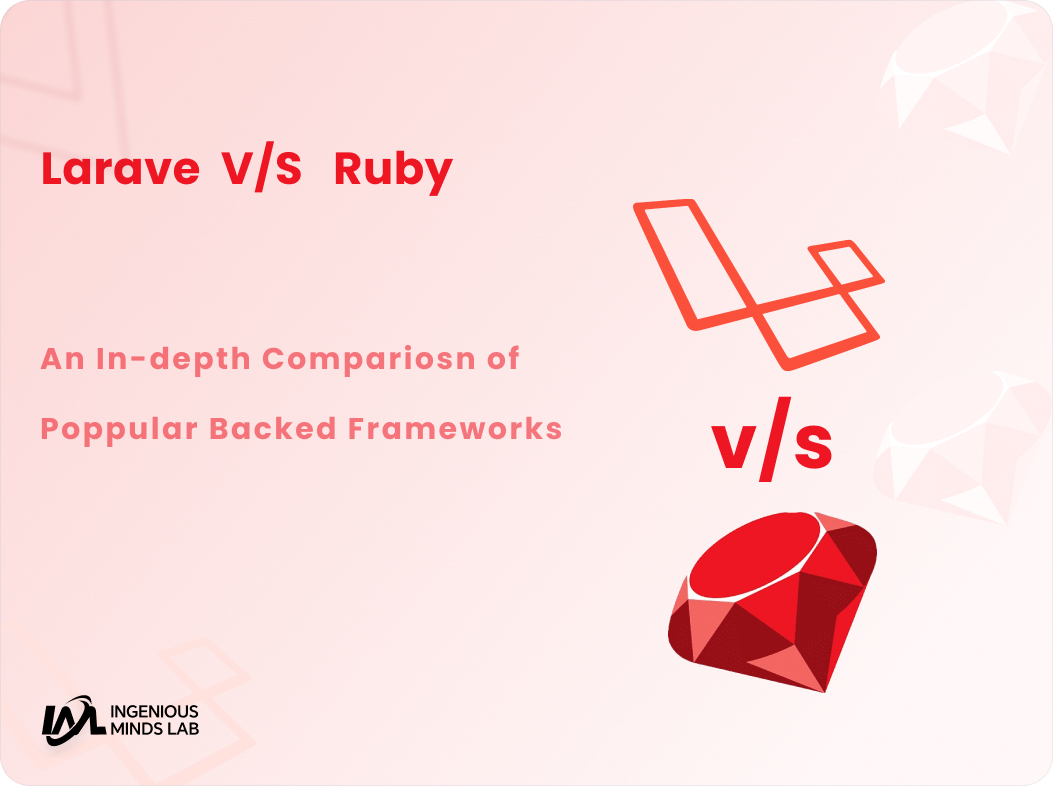Introduction:
In the world of web development, backend frameworks play a crucial role in building robust and efficient applications. Two of the most popular backend frameworks in recent years are Laravel and Ruby on Rails. Both frameworks have gained significant traction in the developer community and offer powerful features and functionalities. In this in-depth comparison, we will explore the differences between Laravel and Ruby on Rails, examining their key aspects, strengths, weaknesses, and use cases. So, whether you’re a developer looking to choose the right framework for your next project or simply interested in understanding the contrasts between these two technologies, read on to discover more.
1. Overview of Laravel and Ruby on Rails:
1.1 Laravel:
In the discussion of Laravel vs Ruby on Rails, Laravel and Ruby on Rails are two prominent backend frameworks that have gained significant popularity in the web development community. While both frameworks share the goal of simplifying and streamlining the development process, they have distinct characteristics and cater to different preferences. Let’s take a closer look at the overview of Laravel vs Ruby on Rails to better understand their similarities and differences.
Laravel, built on PHP, is known for its elegant syntax, extensive ecosystem, and developer-friendly features. It follows the MVC architectural pattern and offers a wide range of functionalities, including routing, database migration, caching, and authentication. Laravel’s expressive syntax and built-in command-line interface, Artisan, contribute to its reputation as a flexible and efficient framework. It has a strong focus on modern development principles, such as dependency injection and inversion of control, enabling developers to create modular and maintainable code.
1.2 Ruby on Rails:
On the other hand, Ruby on Rails, written in Ruby, emphasizes convention over configuration. This means that Rails makes assumptions about how the application should be structured, reducing the need for explicit code. Rails provides a comprehensive set of tools and libraries for rapid development, including features like routing, database integration, scaffolding, and testing. Its simplicity, expressive syntax, and focus on developer productivity make it a popular choice for building web applications efficiently.
While Laravel and Ruby on Rails have different underlying languages and philosophies, they both have active and supportive communities. Laravel boasts a vibrant ecosystem with a wide range of packages and libraries, while Ruby on Rails has a strong culture of open-source collaboration and sharing knowledge.
2. Laravel vs Ruby on Rails: Syntax and Language Comparison:
When talking about the Laravel vs Ruby on Rails, it’s essential to consider the syntax and language characteristics of these popular backend frameworks. Laravel is built using PHP, while Ruby on Rails is written in Ruby. Let’s delve into the syntax and language aspects of Laravel vs Ruby on Rails to understand their similarities and differences.
2.1 Laravel:
Laravel, based on PHP, is a widely-used scripting language known for its simplicity and ease of learning. PHP’s syntax is relatively straightforward, making Laravel accessible to developers with varying levels of experience. Laravel leverages modern PHP features, such as anonymous functions and namespaces, to enhance code readability and maintainability. The framework encourages developers to write clean and concise code, resulting in more readable and manageable applications.
On the other hand, Ruby on Rails utilizes the Ruby programming language, which is renowned for its simplicity and developer-friendly syntax. Ruby’s syntax focuses on clarity and expressiveness, allowing developers to write code that closely resembles natural language. This readability contributes to Ruby on Rails’ reputation as a developer-friendly framework, as it enables developers to express complex concepts in a more intuitive manner. The elegant syntax of Ruby on Rails helps streamline the development process and enhances code maintainability.
2.2 Ruby on Rails:
While both Laravel and Ruby on Rails prioritize clean code and readability, their syntax and language characteristics differ. Laravel’s PHP syntax is widely adopted, and developers familiar with PHP will find it easier to transition to Laravel. The expressive features of PHP, combined with Laravel’s elegant syntax, allow developers to write code that is both readable and efficient.
Ruby on Rails, on the other hand, embraces the simplicity and expressiveness of the Ruby language. Ruby’s syntax resembles natural language, making it more approachable and enjoyable for developers. This characteristic of Ruby on Rails encourages developers to write code that is more human-readable and expressive.
So in Laravel vs Ruby on Rails, the syntax and language of Laravel and Ruby on Rails play a crucial role in the developer experience and the maintainability of applications. Laravel’s PHP syntax, with its focus on simplicity and modern features, allows for clean and concise code. Ruby on Rails, with its Ruby language foundation, emphasizes readability and expressiveness, enabling developers to write elegant and intuitive code. The choice between Laravel and Ruby on Rails in terms of syntax and language may depend on the preferences and familiarity of the development team.
